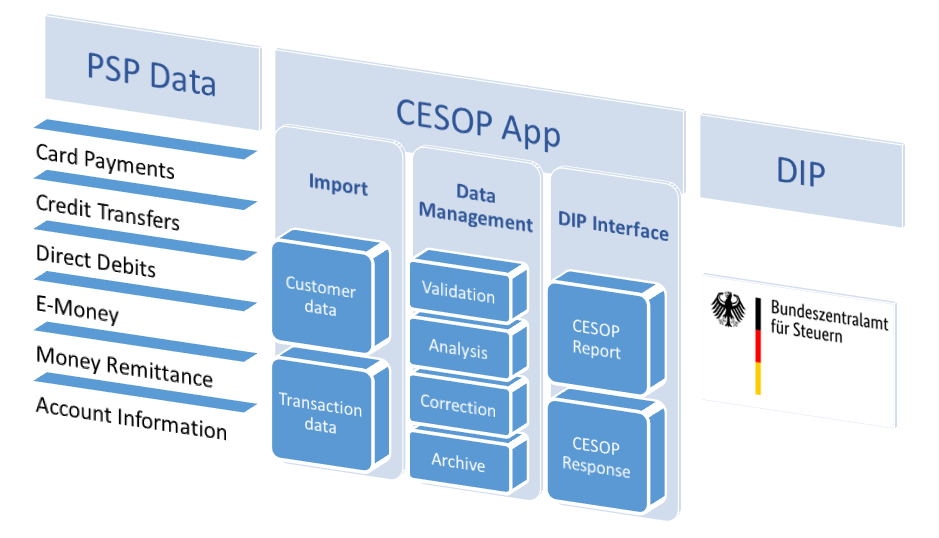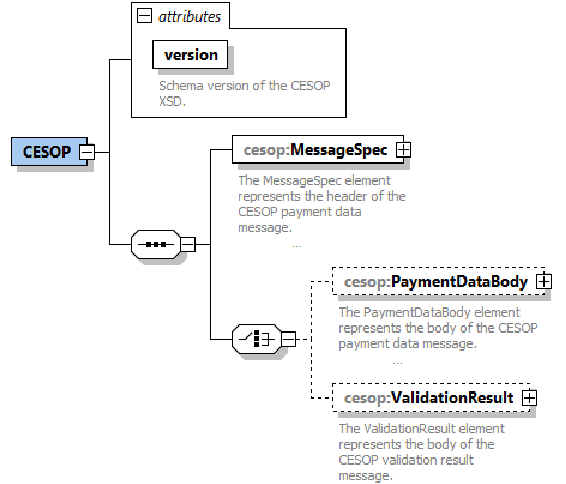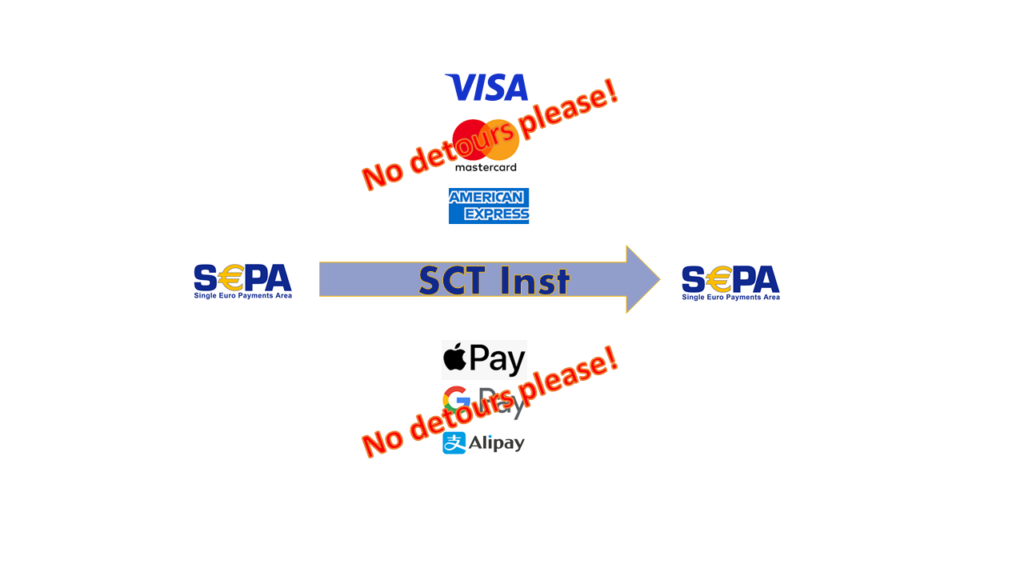An article by
Andreas Wegmann
Published on
06/11/2023
Updated on
06/11/2023
Reading time
2 min
The EU has set up a Central Electronic System of Payment information (CESOP) in order to combat VAT fraud more effectively. In Germany, the Federal Central Tax Office (Bundeszantralamt für Steuern – BZSt) is the competent authority to which payment service providers (PSPs) must submit their CESOP reports. These reports are submitted electronically via the BZSt online portal.

The digital mailbox
The reports for CESOP must be submitted via the so-called digital mailbox (“digitales Postfach” – DIP) of the BZSt, which is also used for reports from the digital platforms (DAC7). To use the mailbox, you must first register, which requires a BZSt number and a password. During the registration process, a certificate is generated that must be used in further communication with the DIP (public key authentication).
The mailbox can currently only handle file sizes of one GB, which means that large messages must be split into several files. A test system is also available.
CESOP – How is the application submitted to the BZSt?
Anyone expecting the CESOP report to simply “deliver” data, as is the case with the ECB statistics, will be disappointed. The system provides for a dialogue in which incorrect reports must be corrected. A report is only deemed to have been submitted successfully if no objections are raised. In addition to the correct technical transmission to the DIP, a professional dialogue is therefore also required. It is important to keep an eye on the “validation result reports”.
All data must be stored for five years and, for example, changes of address of a payee must be taken into account in the reports.

Quelle: BZSt.
Validation Result Reports
The notifications submitted by the PSP are validated by the German authority in a first step. If the validation is positive, the verified declaration is forwarded to CESOP at EU level and validated again there. A report that is initially confirmed as “VALIDATED” by the BZSt can therefore – after the check at EU level – be criticised as “PARTIALLY REJECTED”. The PSP must then correct the data records of the disputed payee.
If the report is already contested by the BZSt, it must be resubmitted in full. A negative validation result is sent to the PSP as an XSD form. The XML file contains a “ValidationResult” instead of the “PaymentDataBody” and the “MessageSpec” contains a “CorrMessageRefID”, which refers to the message to be corrected (it refers to the original “MessageRefID”).
If you have any questions about CESOP or are looking for a solution for submitting CESOP reports, please use our contact form.
Share




